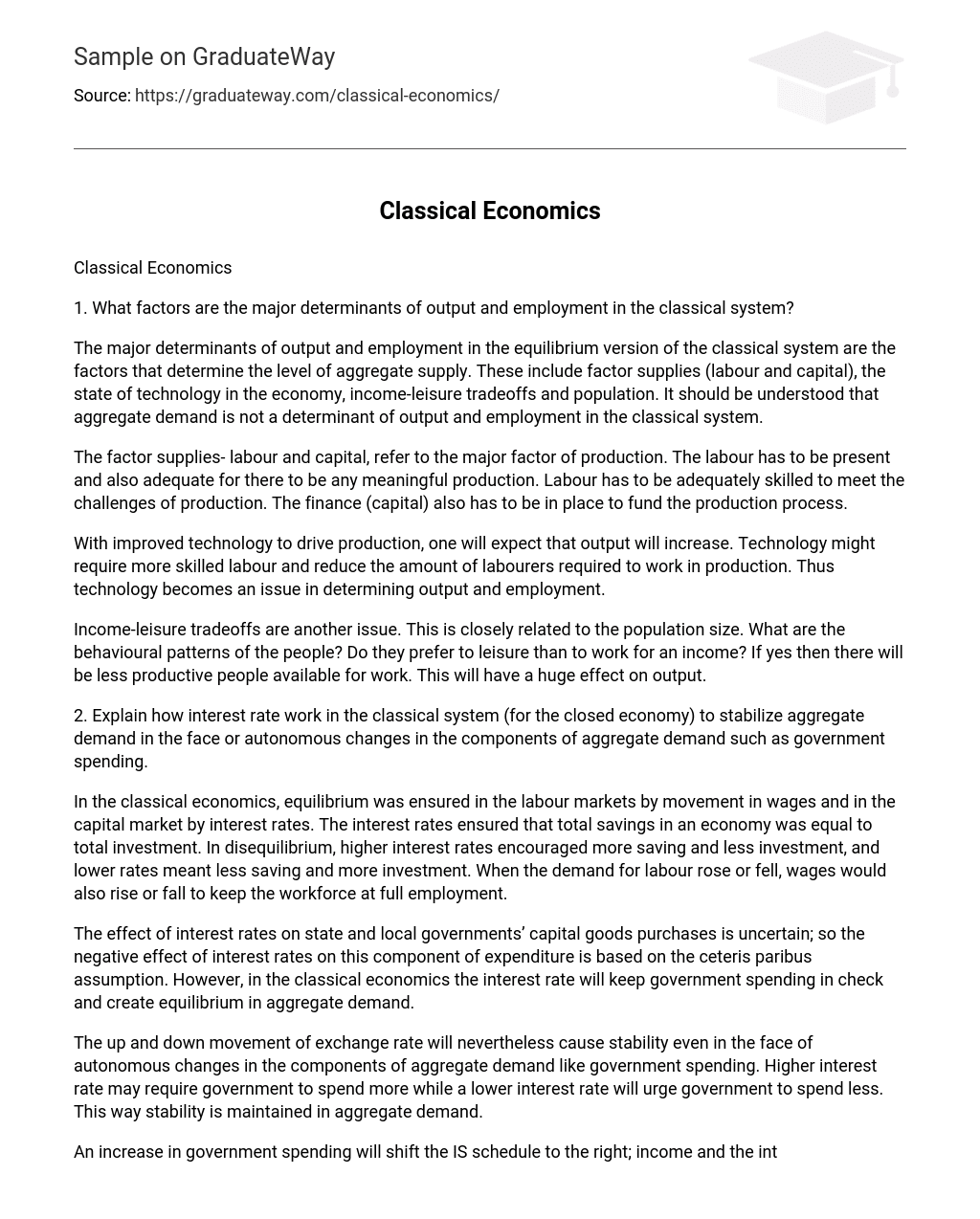1. What factors are the major determinants of output and employment in the classical system?
The major determinants of output and employment in the equilibrium version of the classical system are the factors that determine the level of aggregate supply. These include factor supplies (labour and capital), the state of technology in the economy, income-leisure tradeoffs and population. It should be understood that aggregate demand is not a determinant of output and employment in the classical system.
The factor supplies- labour and capital, refer to the major factor of production. The labour has to be present and also adequate for there to be any meaningful production. Labour has to be adequately skilled to meet the challenges of production. The finance (capital) also has to be in place to fund the production process.
With improved technology to drive production, one will expect that output will increase. Technology might require more skilled labour and reduce the amount of labourers required to work in production. Thus technology becomes an issue in determining output and employment.
Income-leisure tradeoffs are another issue. This is closely related to the population size. What are the behavioural patterns of the people? Do they prefer to leisure than to work for an income? If yes then there will be less productive people available for work. This will have a huge effect on output.
2. Explain how interest rate work in the classical system (for the closed economy) to stabilize aggregate demand in the face or autonomous changes in the components of aggregate demand such as government spending.
In the classical economics, equilibrium was ensured in the labour markets by movement in wages and in the capital market by interest rates. The interest rates ensured that total savings in an economy was equal to total investment. In disequilibrium, higher interest rates encouraged more saving and less investment, and lower rates meant less saving and more investment. When the demand for labour rose or fell, wages would also rise or fall to keep the workforce at full employment.
The effect of interest rates on state and local governments’ capital goods purchases is uncertain; so the negative effect of interest rates on this component of expenditure is based on the ceteris paribus assumption. However, in the classical economics the interest rate will keep government spending in check and create equilibrium in aggregate demand.
The up and down movement of exchange rate will nevertheless cause stability even in the face of autonomous changes in the components of aggregate demand like government spending. Higher interest rate may require government to spend more while a lower interest rate will urge government to spend less. This way stability is maintained in aggregate demand.
An increase in government spending will shift the IS schedule to the right; income and the interest rate will both rise. The increase in government spending stimulates aggregate demand, both directly and through an induced effect on consumption. The interest rate rises because of the increase in money demand as income rises.
An autonomous decline in investment spending will shift the IS schedule to the left; income and the interest rate will both fall. With an autonomous drop in investment, aggregate demand falls, pushing income down. With the drop in income, money demand falls and so does the interest rate.
3. What are the major policy conclusions of classical economics? Explain how these policy conclusions follow from the key assumptions of the classical theoretical system.
The classical theory of aggregate demand is an implicit theory derived from the quantity theory of money. With a fixed velocity, or value of the Cambridge k, a given value of the money stock (M) determines the aggregate monetary demand for goods (PY). In the classical theory, a bond-financed increase in government spending would not affect the aggregate supply or demand schedule. Therefore, the price level and levels of output and employment would not be affected. The sale of bonds would increase the demand for loanable funds and the interest rate would rise.
The main policy conclusion of classical economics is that the pursuit of individual self-interest produced the greatest possible economic benefits for society as a whole through the power of the invisible hand. The classical economy also believed that an economy is always in equilibrium or moving towards it.
References
1. Wikipedia, the online encyclopaedia. http://en.wikipedia.org/wiki/Classical_economics. Sourced at 02:00 GMT+1 11/10/06





